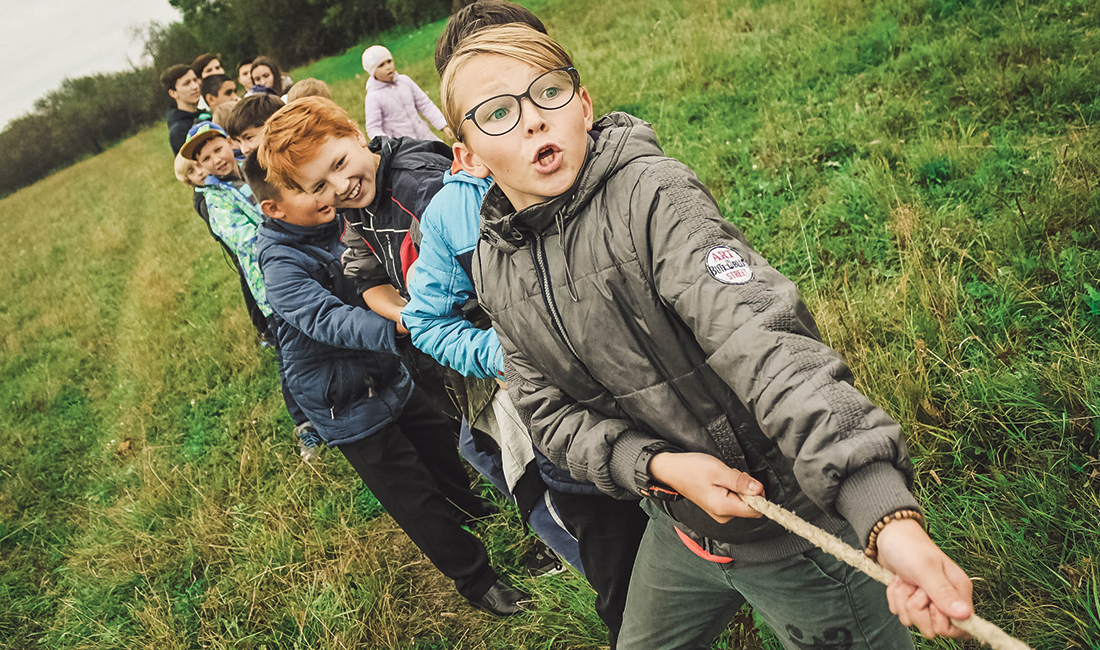Researching young people is enormously rewarding and fun. Kids are enthusiastic about the things they care about, they’re passionate about the details, and they’re honest. Young people certainly aren’t afraid to tell you exactly what they think and this can be difficult for client teams having to listen to sometimes brutal and unfiltered responses! But researching young people also presents some challenges: they rarely sit still, they have short attention spans, and they (fairly regularly) contradict themselves. Conducting a research project with kids is like untying a big ball of string—it can be trying at times and patience is a must; and that’s just in markets where I speak the language.
I’ve been conducting research for youth brands for over twenty years and in that time kids’ worlds have changed and evolved dramatically. For researchers, it’s a constant battle to stay on top of the latest trends in this space and develop research methodologies that help us tap into young peoples’ worlds and lives. Add to this the complexity of conducting research in a foreign market, and it can feel like getting insights from an international kids’ research study is a difficult area to tackle.
So I thought it might be worthwhile to share some of the areas we think about when planning an international kids’ research project with the hopes of starting a conversation about how we as researchers can better create compelling, global youth research projects. This includes the bigger, modern issues impacting young lives today as well as some practical considerations when
running this type of research.
Kids’ Media Worlds Are Now Global in Nature
Kids are now beginning to develop a common content language that spans across borders and time-zones. Context has always been important when shedding a light on the brands, products, and content resonating with kids—where does each piece of media sit in a young person’s media landscape? How does it complement/compare with other TV shows they watch? Apps they download? Games they play?
In the past, these media environments were much more localized—a youth project always began with an exhaustive profile of each media market and the resonant brands within each. While there were a few overlaps between countries and markets, you could count on each market having a robust set of distinct children’s shows with whom a researcher would need to come up to speed before each project.
While context is obviously still hugely important, in 2019 this emphasis has shifted from a local to a more global perspective. YouTube and SVOD (subscription video on demand) providers have opened the door to content flowing fluidly between borders in a way we never saw ten years ago. This is particularly true in markets where internet penetration is high; I’ve heard boys in the UK and Romania talk with passion about the same Fortnite streamer, and girls in France and Italy waxing lyrical about the same US-based family vlogger. Shared digital activities such as Slime videos and online tutorials are connecting with kids across markets. Recognizing this change in the content landscape, brands are now creating content with a global market of young viewers in mind. We find ourselves increasingly testing content with universal, cross-language appeal; in fact, we recently conducted research into a new show that skewed away from any spoken elements altogether, enabling the program to be quickly rolled out across multiple, non-English speaking markets. Of course, we do still see some differences across markets, but there is an increasingly homogeneous approach to video that seems to have been generated by increased access to digital content (something we’ve written about in the adult space as well—you can find it on www.hookresearch.co.uk/blog under One-Size-Fits-All Media).
When conducting international kids’ research, it’s important that we choose a partner that understands the bigger content landscape in which we now operate; our favorite partners not only are able to help us translate language and local names for shows (for instance, it’s fairly important that they know Mac-Mac is Romanian for Duck Tales), but also help us contextualize findings within a more global media diet as well.
Kids Are Curating Their Own Content
YouTube and Netflix have also changed the way that young audiences choose and consume content. In the past, we used to regularly use linear TV schedules as a way of sparking conversations with kids about when they watch different programs (and what they might expect at different times). While linear scheduling still has massive impact on the way kids think about programming, a research process now also needs to account for the many other journeys into content and how these can ultimately impact viewing.
In 2019, kids have control. The increasing usage of VoD (video on demand) means young people can choose the content they watch and when they watch it—with parents’ permission, of course. Netflix provides instant volume of content to kids, allowing them to watch shows in any order they like and easily switch between seasons of big shows.
Modern youth brands need to not only think about the various elements of content (e.g., characters, story arcs, setting), but also keep in mind the various platforms and devices where this content may be consumed.
In India, for instance, we’ve found higher expectations of short-form content that can be quickly consumed on a phone and tied into apps or games. Of course, penetration of different devices must be kept in mind as well. For instance, in areas where fewer kids have access to smartphones, merchandising (clothing, toys, etc.) is generally much more important; while some European markets may be infatuated with the digital aspects of a new kids brand, certain African markets may be more interested in collectibles.
Local Content Gatekeepers
Beyond the content young people are accessing themselves, it’s also important to recognize other barriers/facilitators in kids’ media lives: the content gatekeepers that still nominally control the flow of content to their young charges.
Children live in the middle of a web of various influencers. Many of these are external (celebrities, YouTubers, and school friends are generally top of most lists), but family members still have the biggest impact on the media young people are consuming on a daily basis. Now, more than ever, influence is traveling fluidly between different generations as parents and young people share content experiences.
As UK-based researchers, we find it tempting to project our own local media habits onto other countries, but the relative impact of each family member on the viewing habits of young people can be wildly different by market. Who has the most influence in Poland over what a young person watches on TV? The mum? The siblings? Nope, it’s the grandmother. As a main child-minder, “Babunia” controls the Polish remote. She is, however, a bit more relaxed than her German counterparts (the parents) who strictly control the content on their TV screens.
This is an area in which international researchers will build up a solid base over time. However, we still construct pre-tasks to help us keep an eye on the content-
gatekeepers in any markets (and if they are starting to shift!).
Practical Planning
Beyond the wider media landscapes in which kids are immersed—the content they’re consuming, the ways they’re consuming it, and the gatekeepers controlling access—there are some more practical points that all international kids researchers need to think about when structuring a research session. First of all, there are differing weekday schedules in different parts of the world; while in the UK we are restricted to mainly late-afternoon and early evening focus groups with children, in France we often consider running groups on Wednesday afternoons (when students have some time off). In Spain, on the other hand, we can generally run a bit later into the evening given the fact that kids stay up much later than they do in other parts of Europe.
Local holidays are another big factor when constructing research projects. In my many years as a kids researcher, there have been more than a few times where we’ve had to mold a client’s tight timetable around big holidays. These can be one-off days that need to be dealt with. For example, recently, I found myself trying to organize a tricky project around Polish Independence Day. Others concern larger periods of time; while the summer holiday is a great opportunity to conduct research with children in the UK, Italy practically shuts down in August. It’s a struggle to convince parents to participate in research during this time as most are traveling. Late summer research in Germany can be can be tricky for the same reasons.
Mixed Methodology Approaches
With so many factors to keep in mind when conducting international kids research, we generally find that the most effective projects bring together a robust mix of methodologies, including:
- Online media diaries can help us understand the different spaces that kids are encountering and consuming content. Diaries enable us to explore how different markets can add flavor to bigger global trends.
- Video ethnographies illuminate kids’ physical spaces, show us where toys, books, and magazines all live in the home. They create a vibrant picture of respondents for clients unable to travel to foreign focus groups.
- Longitudinal online pre-tasks help create a long-term vision of where different pieces of media sit within the broad sweep of a young person’s content diet. For instance, we might construct a series of questions and tasks over a week-long period that will help shed light on the platforms that pre-teens use to watch different types of video content and to uncover what their expectations are from each space.
- Upbeat, stimulus-heavy face-to-face focus groups can help us dig into the various nuances of young people’s reactions to storylines, characters, and settings. One example: What is it about a particular character that makes them disliked? Is it their personal appearance (e.g. scary eyes, an unusual nose)? Their attitude to the protagonist (e.g., they’re mean, they’re a bully)? The animation style used? Using stimulus cards can help us dig deep into the specific elements of characters that don’t resonate with young viewers, and how what resonates changes in different markets.
Bringing these (and many other) methodologies together not only helps us to understand how individual kids react to specific pieces of content, but also helps us situate these findings within their wider lives.
Taking kids research on the road to different countries, particularly those with foreign languages and cultures, opens the door to many different challenges. These projects, though, also have the potential to unlock powerful insights for brands; a great international kids research piece will help create products and marcomms that not only will resonate in one market but will connect with young audiences around the globe as well.
And that, in my opinion, makes the challenge and complexity in these projects very worthwhile indeed.
Learn more about kids and family research at the Hook Research website: https://www.hookresearch.co.uk/kids-family-research-agency/



Be the first to comment